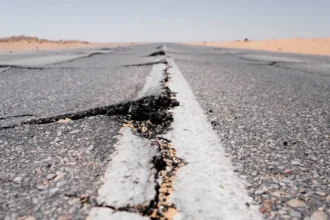Have you ever wondered what would happen if bees suddenly disappeared? According to Down To Earth, we’re facing a serious global crisis as pollinator populations are crashing around the world. These tiny creatures – including bees, butterflies, birds, and bats – are vanishing at alarming rates, threatening both our food supply and natural ecosystems.
Understanding the Massive Scale of Pollinator Decline
The numbers are shocking: 71% of pollinator species have seen their populations shrink, with the most significant drops occurring between 1993-2008. These aren’t just minor reductions. North American bumblebee sightings have plummeted by 50% since 1974, while German nature reserves have lost 76% of their flying insect biomass over just 27 years.
Why does this matter so much? These creatures support the reproduction of over 75% of flowering plant species. Nearly one-third of all food humans eat depends on animal pollinators. Without them, a 2017 research paper warns that “ecosystems unravel, crop yields plummet, and the delicate balance of life itself is disrupted.”
How Pollinator Decline Varies Across Regions
The crisis isn’t uniform worldwide. In North America, about 22.6% of native pollinators face elevated extinction risk, according to PNAS research. The causes vary by region: western and northern areas suffer primarily from climate change impacts, while eastern regions face threats from agriculture and urban development.
In Germany, the dramatic 76% decline in flying insects is linked mainly to agricultural intensification – especially increased pesticide and fertilizer use, as reported by Mongabay. Meanwhile, farmers in China and the Himalayan region are already experiencing such severe pollinator shortages that some have resorted to manually hand-pollinating crops – a time-consuming and expensive process.
The Growing Extinction Risk
The outlook is grim. Globally, over 40% of invertebrate pollinator species (mainly bees and butterflies) face extinction, according to the IPBES assessment. Even vertebrate pollinators aren’t safe – approximately 16.5% are at risk of disappearing forever. Scientists warn that up to one million species could vanish in the coming decades if current trends continue.
Climate Change and Habitat Loss: A Double Threat
What’s causing this massive decline? CABI Reviews identifies climate change as the leading threat, affecting water availability, temperature patterns, and resources pollinators need to survive. Rising temperatures disrupt the delicate timing between when plants flower and when pollinators are active.
The U.S. Fish & Wildlife Service highlights another major problem: habitat destruction from development and monoculture farming (growing just one crop over large areas). These practices eliminate the diverse plant communities pollinators need. Meanwhile, USU Extension notes that diseases like parasitic mite syndrome and the deadly Varroa mite are decimating honey bee colonies, causing up to 90% hive losses in some U.S. regions.
The Critical Impact on Agriculture and Food Security
Our food system is increasingly vulnerable. Cross-pollinated crops have increased by 300% over the last 50 years, making us more dependent on pollinators just as their numbers crash. Research published on ResearchGate shows that insect pollination improves yields by 18-71% across major crops like field bean and buckwheat, with an average improvement of 10-67% across different crop types.
This translates to enormous economic value. The global worth of pollination services is estimated between £30-70 billion annually. Without these free services from nature, food prices would rise dramatically, and some crops might become too expensive to grow commercially.
The Human Response to Pollinator Loss
As pollinator populations continue declining, humans are being forced to adapt. In parts of China’s Sichuan province, farmers now climb trees with handmade tools to pollinate apple and pear blossoms – work that bees once did for free. This labor-intensive process shows what our future might look like if we don’t address the root causes of pollinator decline.
Looking Forward: Can We Reverse the Decline?
The future of our food system and natural ecosystems depends on whether we can halt and reverse pollinator decline. Will we make the necessary changes to our agricultural practices, reduce pesticide use, preserve diverse habitats, and address climate change? The answer will determine not just the fate of these tiny creatures, but the security of our own food supply for generations to come.











